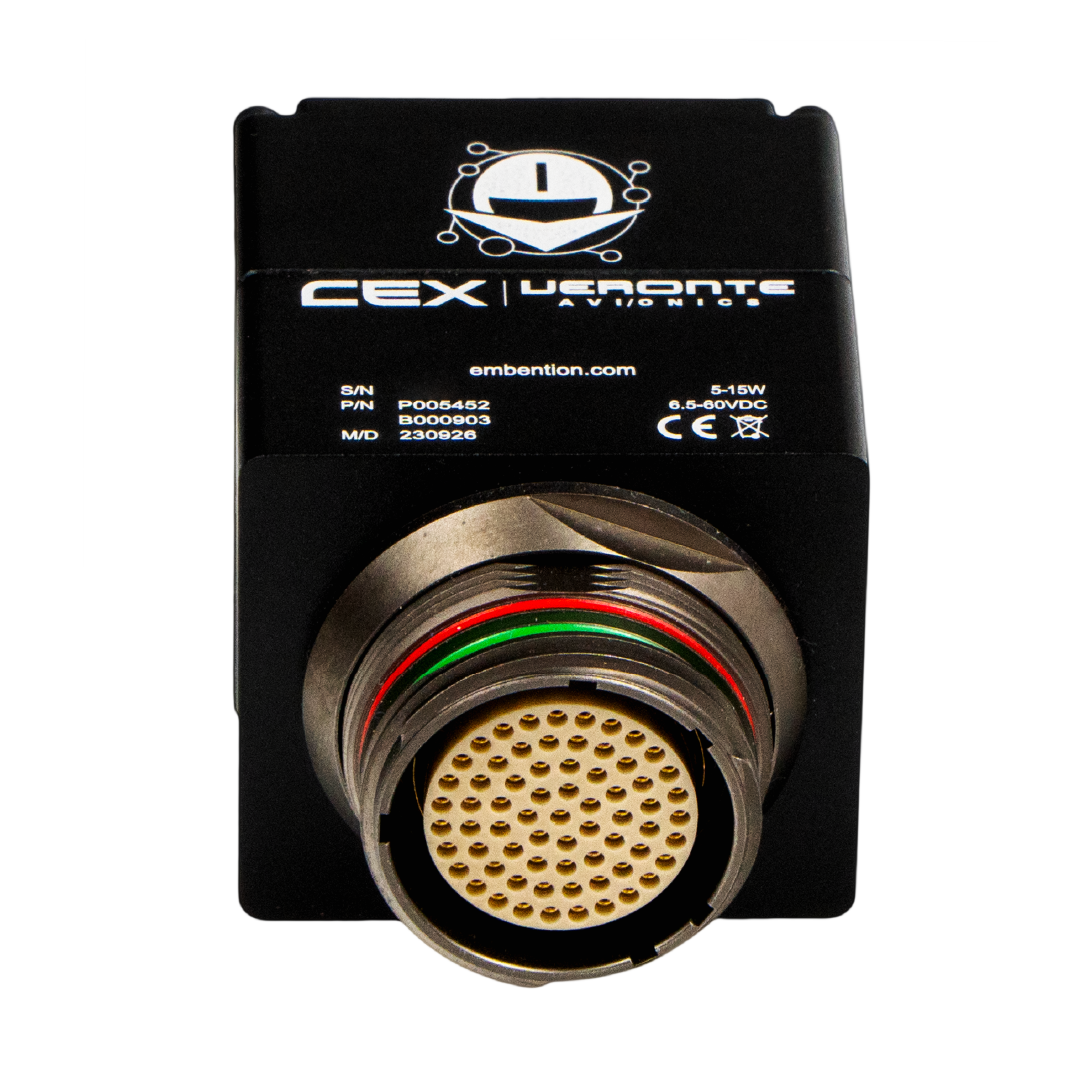
Avionics CEX
Expansión de E/S y Gestión de Bus
Veronte Avionics CEX es un periférico diseñado para facilitar la reducción de cables en vehículos autónomos, al mismo tiempo que permite aumentar el número de dispositivos en el sistema, mejorando la conectividad de E/S y la protección del bus.

Avionics CEX
Expansión de E/S y Gestión de Bus
Veronte Avionics CEX es un periférico diseñado para facilitar la reducción de cables en vehículos autónomos, al mismo tiempo que permite aumentar el número de dispositivos en el sistema, mejorando la conectividad de E/S y la protección del bus.
Extensión de E/S
Optimización del cableado
Bus CAN redundante
Concentrador de datos
Protección IP66 y EMI
Gestión Avanzada de E/S
Mejor control de E/S y buses.
Módulo de Expansión de E/S
Permite ampliar el número de componentes de la aeronave y proporciona una integración perfecta con todo tipo de periféricos. Veronte CEX añade puertos PWM, RS232, RS485, ARINC, analógicos, GPIO, etc. al Ecosistema Veronte, conectados a través de un bus redundante.
Optimización de Red
Mejora la conectividad para garantizar una comunicación eficiente y un rendimiento superior en drones y eVTOL. Interfaz con periféricos remotos a través de un bus redundante y distribuye cargas gracias a las capacidades de filtrado de mensajes y concentrador de datos.
Protección de Bus
Garantiza la robustez frente a fallos y la certificación de aeronaves con una gestión de bus de alta confiabilidad. Mejora los sistemas de aeronaves al asegurar una transferencia de datos robusta e integridad del sistema gracias a las funcionalidades de detección de fallos de babbling idiot y aislamiento de periféricos.
Extensión I/O
CAN bus Redundante
Protección IP66 & EMI
Data Concentrator
Optimización de cableado
Gestión avanzada de I/O
Control mejorado de I/O y Buses
Módulo de Expansión de E/S
Permite ampliar el número de componentes de la aeronave y proporciona una integración perfecta con todo tipo de periféricos. Veronte CEX añade puertos PWM, RS232, RS485, ARINC, analógicos, GPIO, etc. al Ecosistema Veronte, conectados a través de un bus redundante.
Optimización de Red
Mejora la conectividad para garantizar una comunicación eficiente y un rendimiento superior en drones y eVTOL. Interfaz con periféricos remotos a través de un bus redundante y distribuye cargas gracias a las capacidades de filtrado de mensajes y concentrador de datos.
Protección de Bus
Garantiza la robustez frente a fallos y la certificación de aeronaves con una gestión de bus de alta confiabilidad. Mejora los sistemas de aeronaves al asegurar una transferencia de datos robusta e integridad del sistema gracias a las funcionalidades de detección de fallos de babbling idiot y aislamiento de periféricos.
Optimización de Cableado
Veronte CEX se integra de manera fluida y sencilla, ofreciendo una solución rápida para mejorar la conectividad y optimizar el cableado en vehículos grandes. Su diseño fácil de usar garantiza un proceso de integración rápido y eficiente para mejorar el rendimiento general.
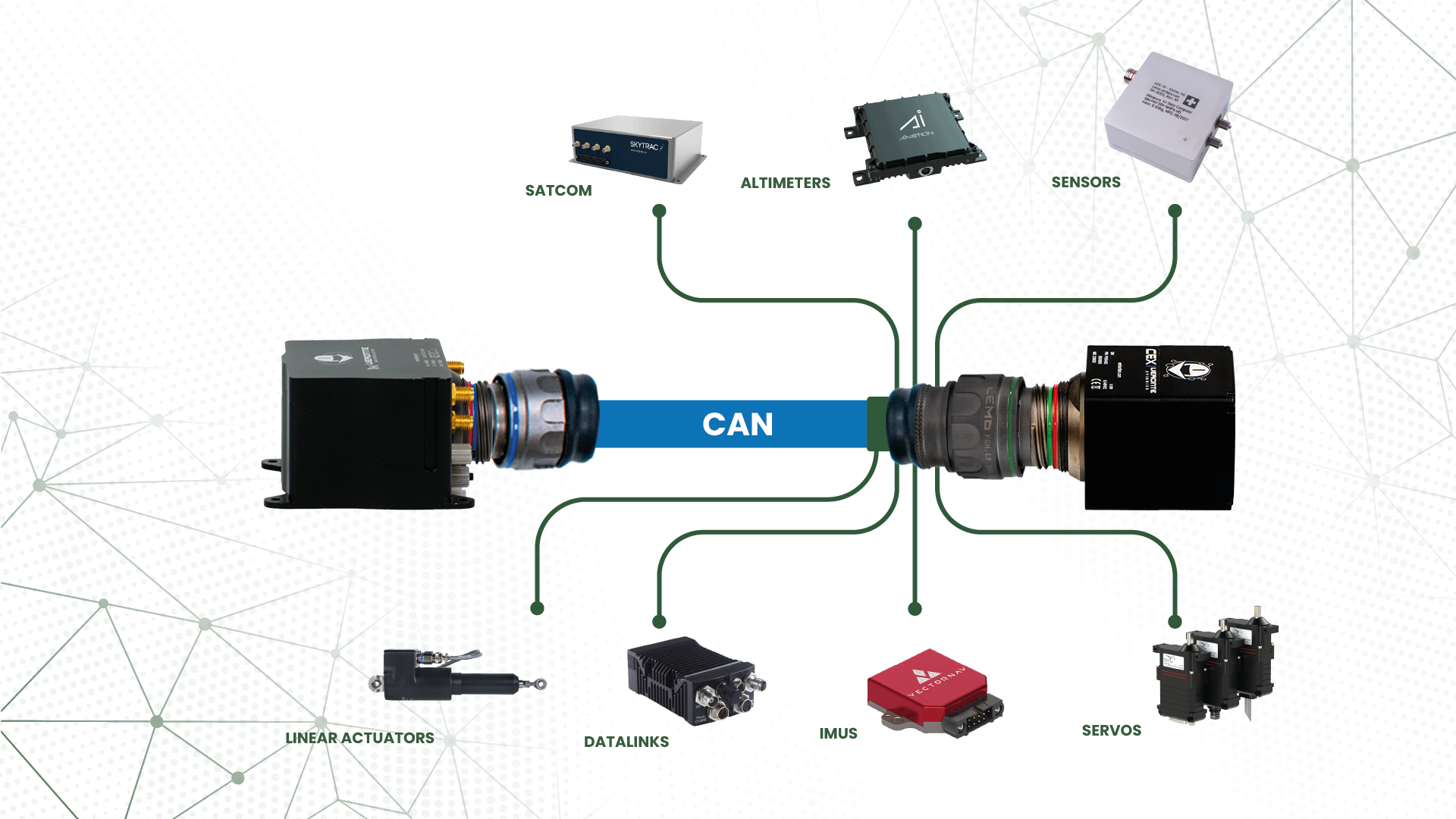
Módulo de expansión de E/S
Añade interfaces E/S, incluyendo RS232, RS485, ARINC, I2C, PWM, ECAP, y puertos analógicos.
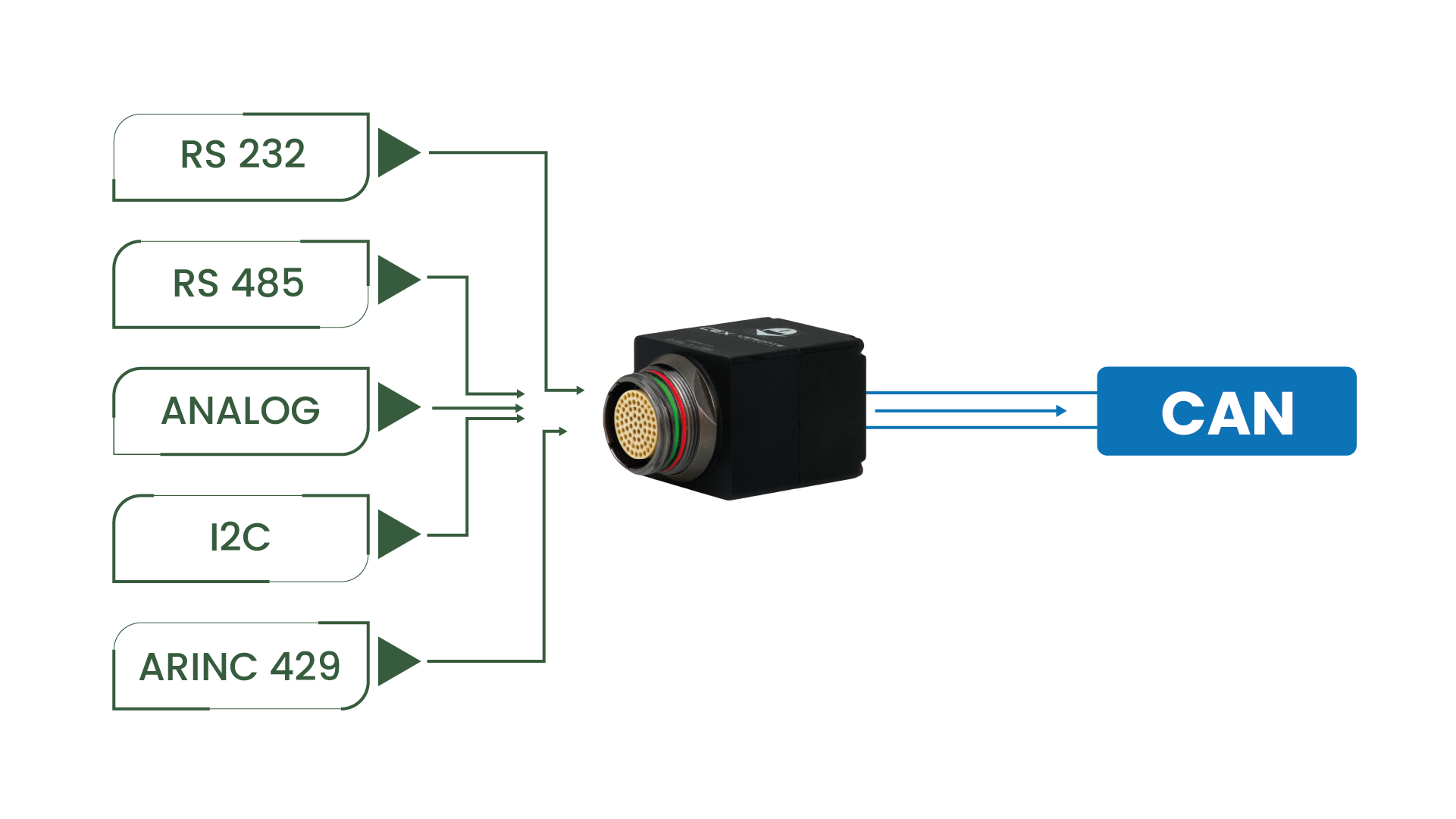
Data Concentrator
Posibilidad de condensar la conexión de control, retroalimentación, sensores, etc., en una sola placa.
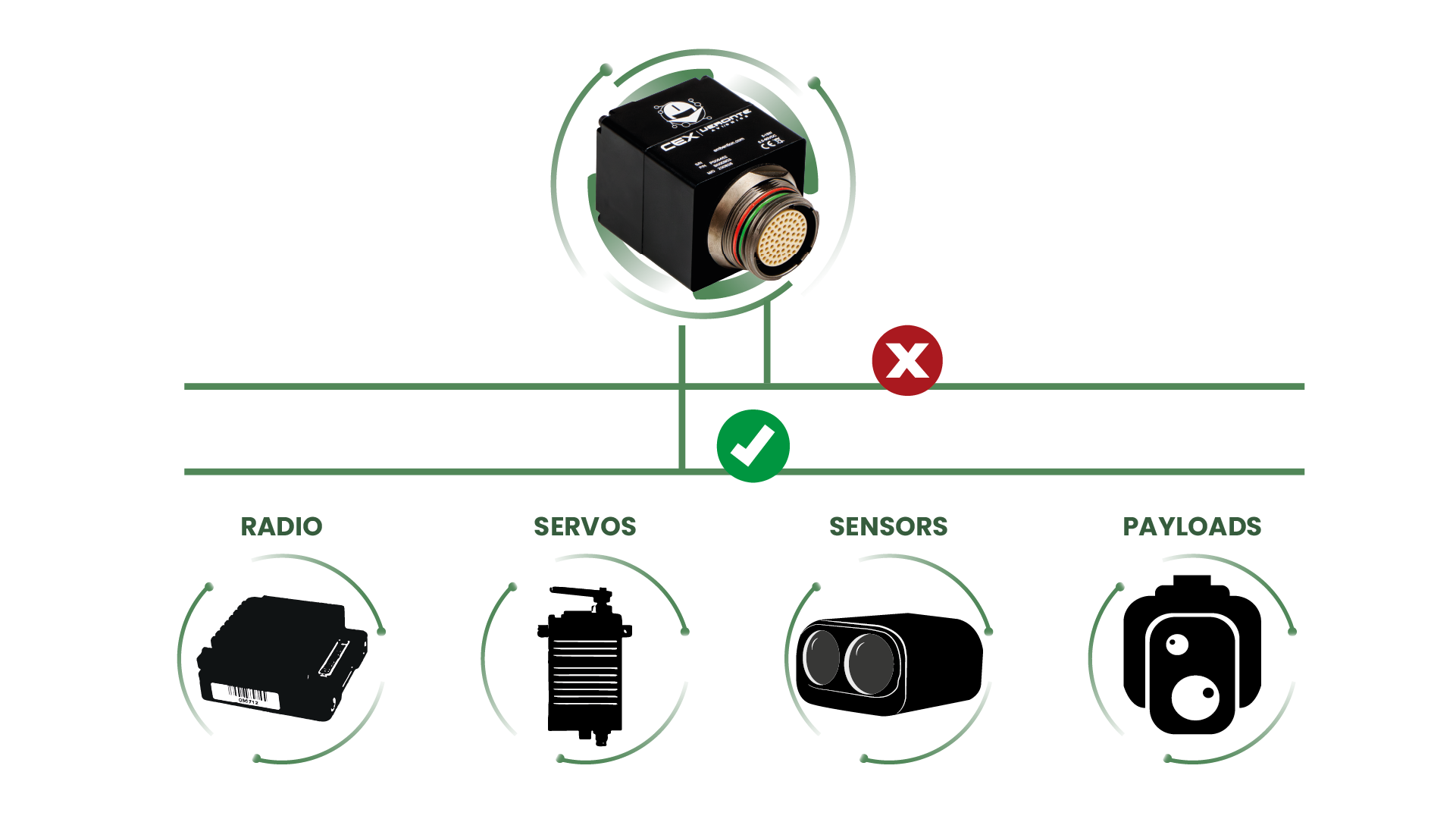
Comunicaciones redundante
Instala dispositivos a largas distancias sin degradación de señal ni interferencias EMI/EMC incluso con la redundancia del bus.
Optimización del cableado
Veronte CEX es fácil de integrar y ofrece una solución rápida para mejorar la conectividad y optimizar el cableado en vehículos de gran tamaño. Su diseño fácil de usar garantiza un proceso de integración rápido y eficiente para mejorar el rendimiento general.

Módulo de expansión I/O
Añade interfaces de I/O, como RS232, RS485, ARINC, I2C, PWM, ECAP y puertos analógicos.

Data Concentrator
Posibilidad de condensar la conexión de control, realimentación, sensores… en una única placa.

Comunicaciones redundantes y robustas
Instale dispositivos a grandes distancias sin degradación de la señal ni interferencias EMI/EMC.
Protección de Bus
Gestión de bus altamente confiable con detección de fallos. Robusto frente a fallos eléctricos y de software.
Smart CAN Isolator
Permite que el sistema continúe operando en caso de fallo en un periférico CAN Bus. Veronte CEX incluye algoritmos de filtrado de mensajes y detección de fallos babbling idiot, filtrando datos no deseados o aislando todo el periférico.
Aislamiento Galvánico
El hardware de Veronte CEX incluye redundancia de CAN Bus con aislamiento galvánico. Aísla el dispositivo del CAN Bus para evitar la propagación del fallo, asegurando el rendimiento del bus de comunicación principal en el vehículo.
Gestión de Redundancia
La conectividad aumentada, combinada con un sistema de redundancia robusto, garantiza resistencia a fallos, contribuyendo a la fiabilidad y rendimiento del sistema. Los algoritmos de votación incluyen funciones de árbitro para arquitecturas redundantes como DRx.
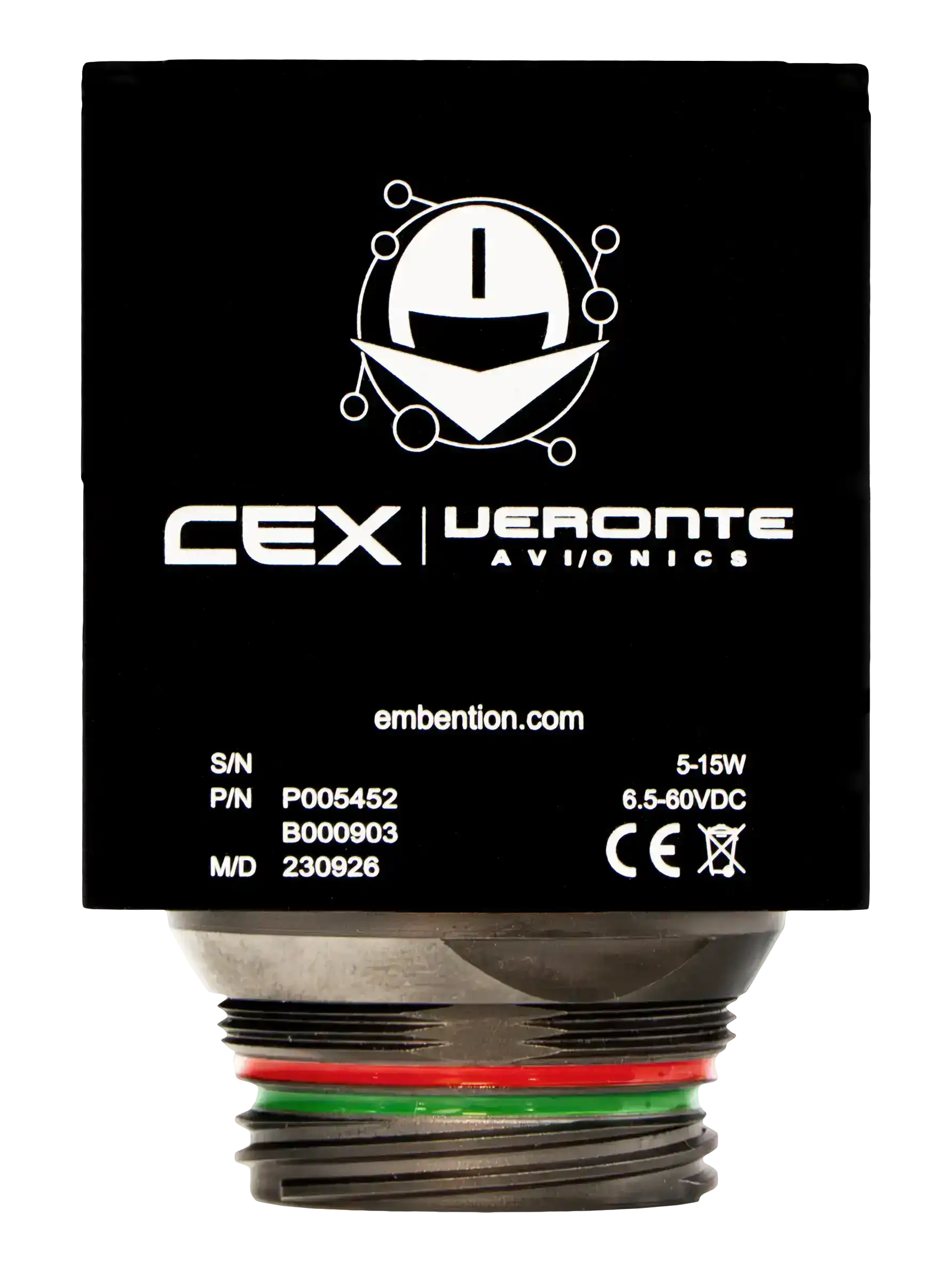
Protección del Bus
Gestión de bus de alta fiabilidad con detección de fallos. Resistente a fallos eléctricos y de software.
Smart CAN Isolator
Permite que el sistema continúe operando en caso de fallo en un periférico CAN Bus. Veronte CEX incluye algoritmos de filtrado de mensajes y detección de fallos babbling idiot, filtrando datos no deseados o aislando todo el periférico.
Aislamiento Galvánico
El hardware de Veronte CEX incluye redundancia de CAN Bus con aislamiento galvánico. Aísla el dispositivo del CAN Bus para evitar la propagación del fallo, asegurando el rendimiento del bus de comunicación principal en el vehículo.
Gestión de Redundancia
La conectividad aumentada, combinada con un sistema de redundancia robusto, garantiza resistencia a fallos, contribuyendo a la fiabilidad y rendimiento del sistema. Los algoritmos de votación incluyen funciones de árbitro para arquitecturas redundantes como DRx.

Construcción Robusta

Resistente al agua
La carcasa de aluminio y el conector de alto rendimiento garantizan una protección IP66 contra agua, humedad y polvo. Esto hace que Veronte CEX sea adecuado para operaciones en entornos adversos cuando se utiliza en todo tipo de drones y eVTOL.
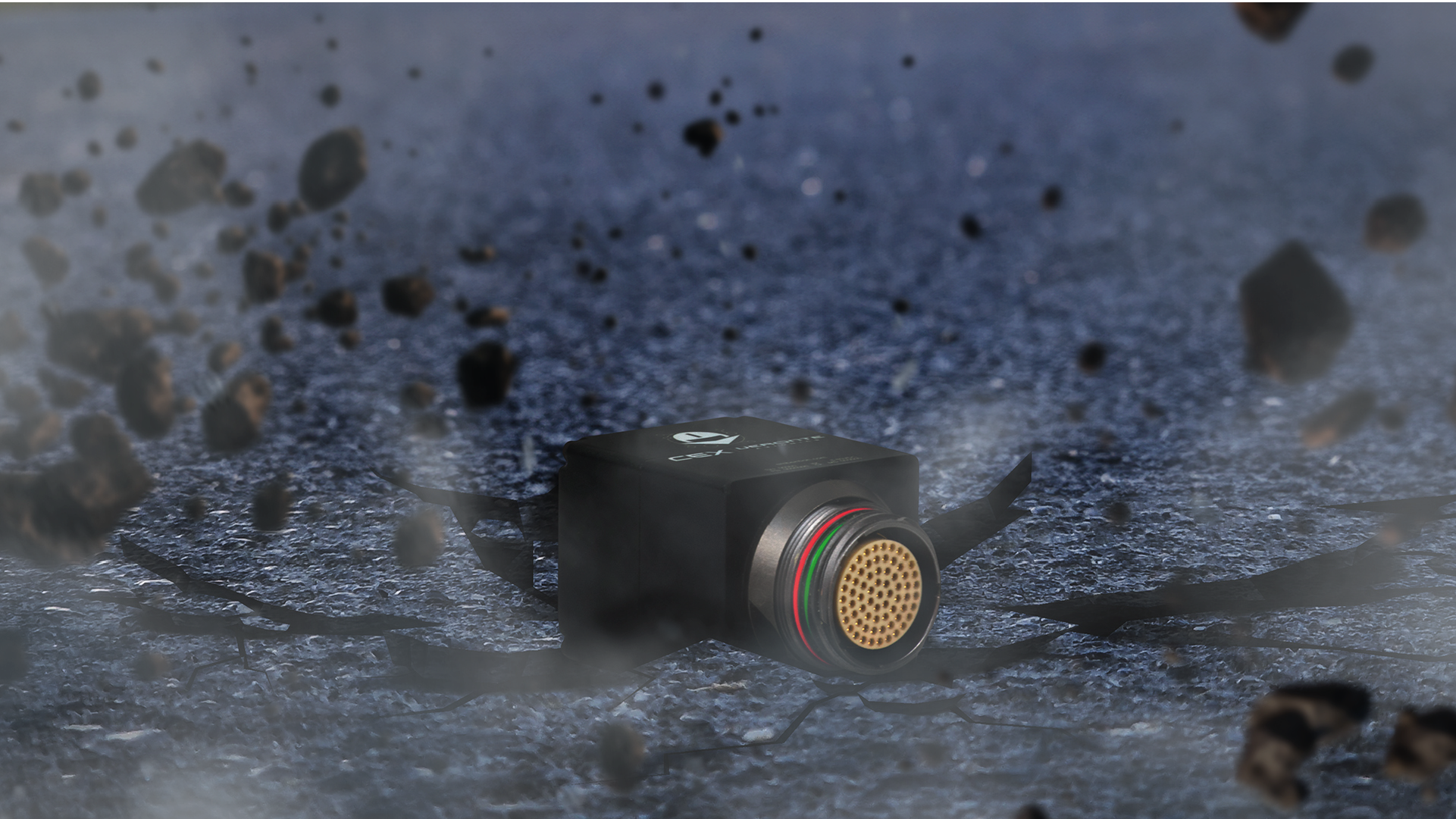
Construcción robusta
El componente Veronte Avionics CEX está hecho de aluminio. Esto lo hace altamente duradero y resistente a interferencias electromagnéticas. Cumple con las pruebas ambientales DO160 y MIL-STD-810 para la certificación de aeronaves.
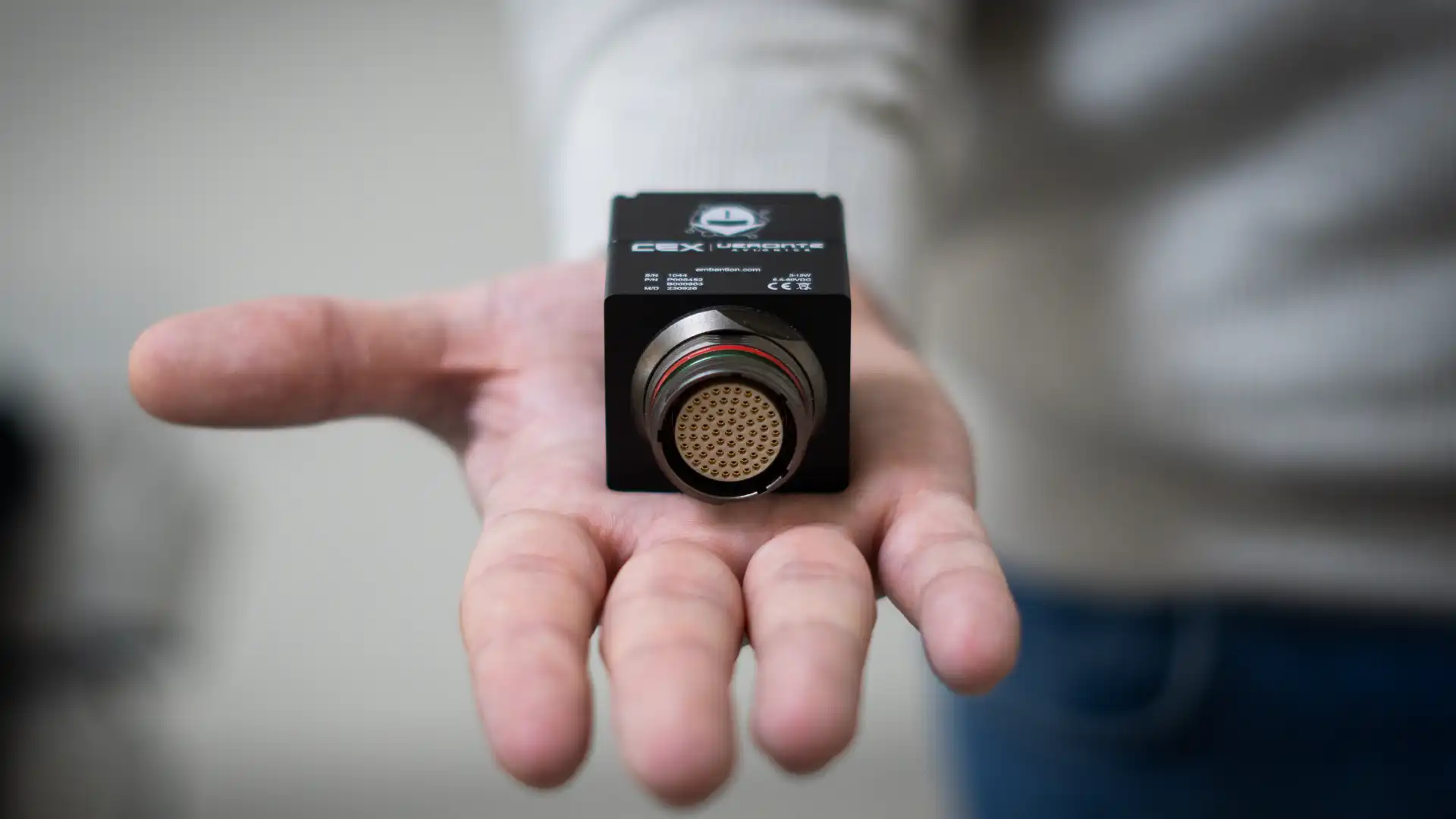
Pequeño y ligero
El sistema aviónico miniaturizado está diseñado para adaptarse a todo tipo de vehículos. Con solo 115 g y dimensiones de 60x41x37 cm, este periférico potente puede cumplir con los requisitos de los sistemas de eVTOL y drones más exigentes, garantizando al mismo tiempo la confiabilidad y robustez.
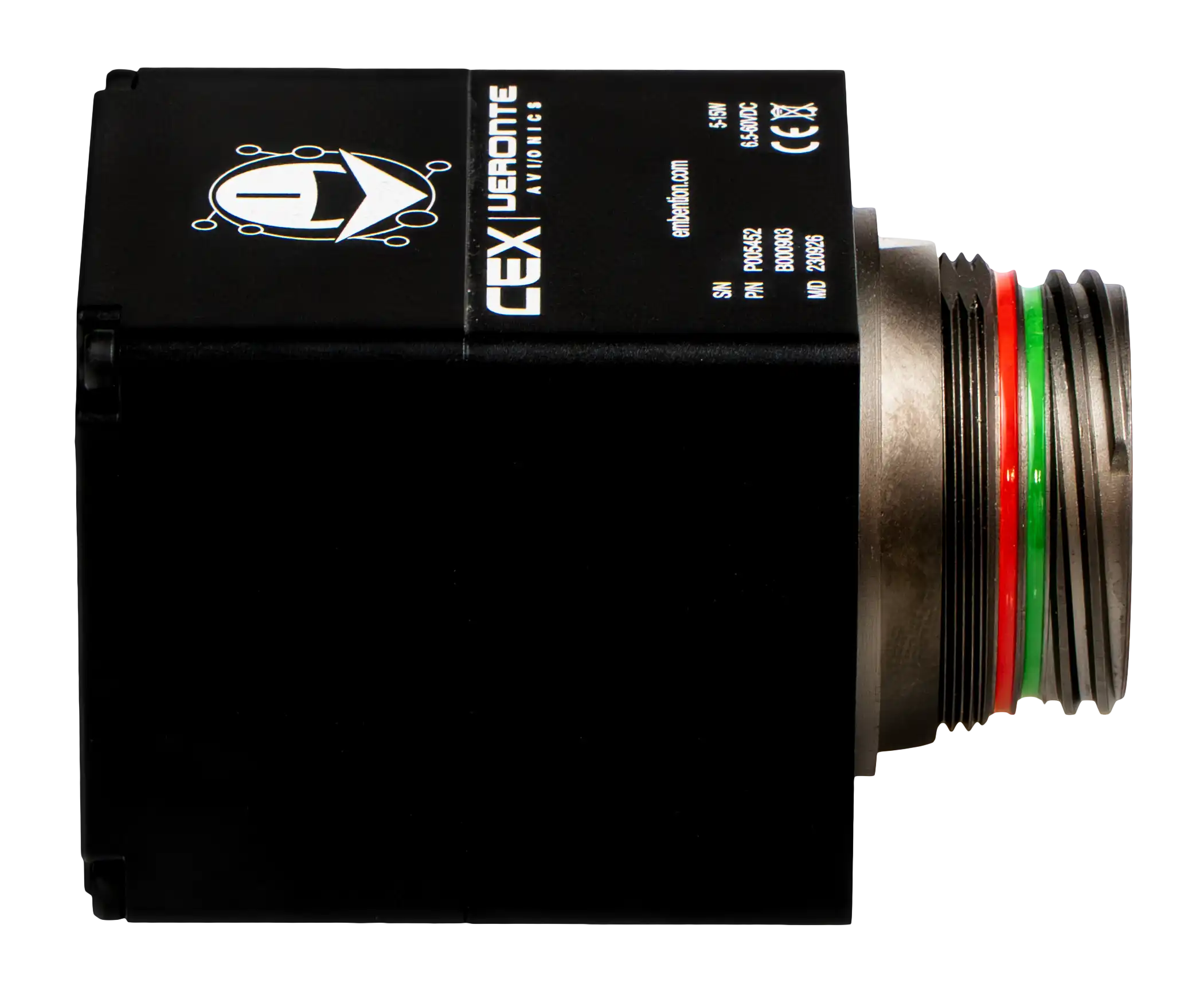
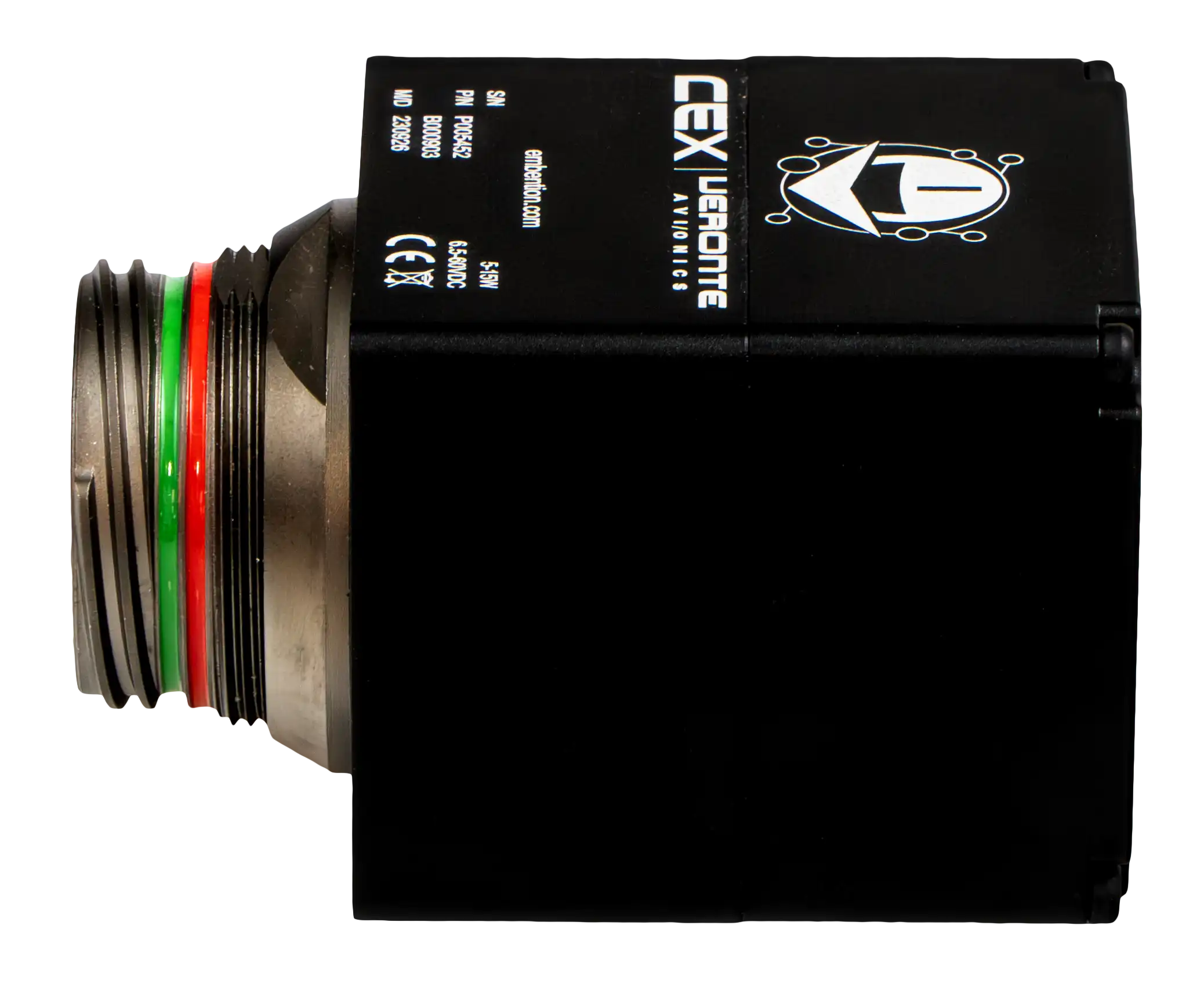
Para Drones & eVTOL
Veronte CEX es un componente versátil dentro del Ecosistema Veronte. Ha sido diseñado especialmente para cumplir con los requisitos de drones grandes y eVTOL. Las capacidades de optimización del cableado, junto con la construcción robusta y la gestión avanzada del bus, lo hacen adecuado para una amplia variedad de aplicaciones en vehículos autónomos, especialmente aquellos de gran tamaño.
Certificación de aeronaves
Embention se compromete con la certificación de drones y eVTOL al garantizar el cumplimiento de DO178C y DO254 en la aviónica para aeronaves autónomas. El paquete de datos de certificación Veronte CEX incluye una serie de documentos necesarios para aprobar un programa de certificación de eVTOL o drone. También se realizan pruebas ambientales de vibración, temperatura, EMI/EMC según los estándares DO160 y MIL-STD-810.
Para Drones & eVTOL
Veronte CEX es un componente versátil dentro del Ecosistema Veronte. Ha sido especialmente diseñado para satisfacer los requisitos de los drones de gran tamaño y los eVTOL. Las capacidades de optimización del cableado combinadas con la construcción robusta y la gestión avanzada del bus lo hacen adecuado para una amplia variedad de aplicaciones en vehículos autónomos, especialmente los que tienen un gran tamaño.
Certificación de aeronaves
Embention se compromete con la certificación de drones y eVTOL garantizando el cumplimiento de DO178C y DO254 en aviónica para aeronaves autónomas. El paquete de datos de certificación Veronte CEX incluye un conjunto de documentos necesarios para aprobar un programa de certificación de drones o eVTOL. También se realizan pruebas ambientales de vibración, temperatura, EMI/EMC de acuerdo con las normas DO160 y MIL-STD-810.


